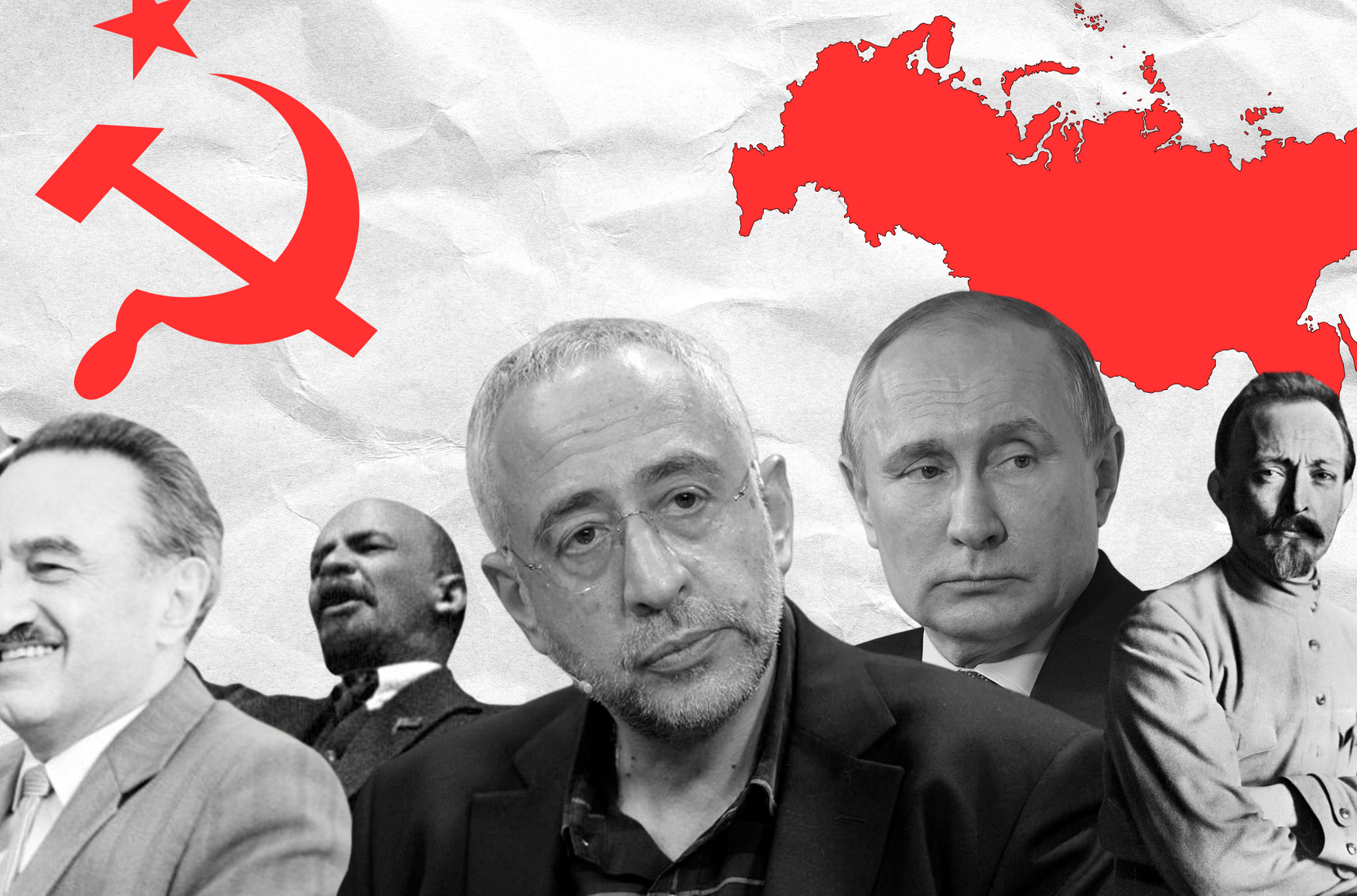

On Sept. 11, 2024, Russian journalist and television host Nikolai Svanidze passed away. His most significant legacy lies in his educational documentaries, which conveyed Russian history — including its most unpleasant episodes — to millions of viewers in an accessible language. In the 2003-2013 television series “Historical Chronicles”, which aired on the state channel Rossiya-1, Svanidze candidly addressed topics including Stalinist repression, the occupation of the Baltic states, and the Holodomor. Since 2014, however, Russian television has taken a different course: programs dedicated to Russian history began glorifying Soviet leaders (though not the Bolshevik revolution!), justifying totalitarianism and expansionism, and, of course, demonizing Western countries.
Content
“Historical Chronicles”: A time for reflection
“The Country of Soviets. Forgotten Leaders”: Simulating dialogue
Two versions of the USSR
Bonus episode: “Good Tsar, Bad Liberals”
Despite the shift in the state’s rhetoric, Nikolai Svanidze remained a consistent critic of Russian authorities and continued to appear frequently on federal channels even after 2014. Until 2022, he was a member of the Presidential Council on Human Rights. The television series “Historical Chronicles”, produced by Svanidze together with his wife Marina Zhukova, is one of the most ambitious documentary projects modern Russia has produced. Over the course of ten years, both journalists produced and aired 96 episodes: one for each year of Russian history from 1901 to 1993, and two episodes for three key years in Russia’s history — 1917, 1941, and 1993. The project ended in 2013, with the episodes covering 1994 to 2000 never having aired.
Since then, there have been no Russian television projects of such scale — or, at least, none that simultaneously offer an objective view of the country’s history. The state increasingly funds revisionist films and series about the USSR and the Russian Empire. In doing so, it manipulates the Russian public consciousness, exploiting society’s political illiteracy, passivity, conspiratorial thinking, and lingering sense of lost greatness following the USSR’s collapse. The path Russian television has taken from Svanidze’s project to the newest films about the USSR vividly illustrates the degradation of historical consciousness in contemporary Russia.
“Historical Chronicles”: A time for reflection
“Historical Chronicles” reflected the spirit of early post-Soviet Russia. Freed from the constraints of censorship, society sought to reassess its past. Svanidze’s project offered an open conversation — vivid and often humorous — about twentieth-century Russia’s most painful moments.
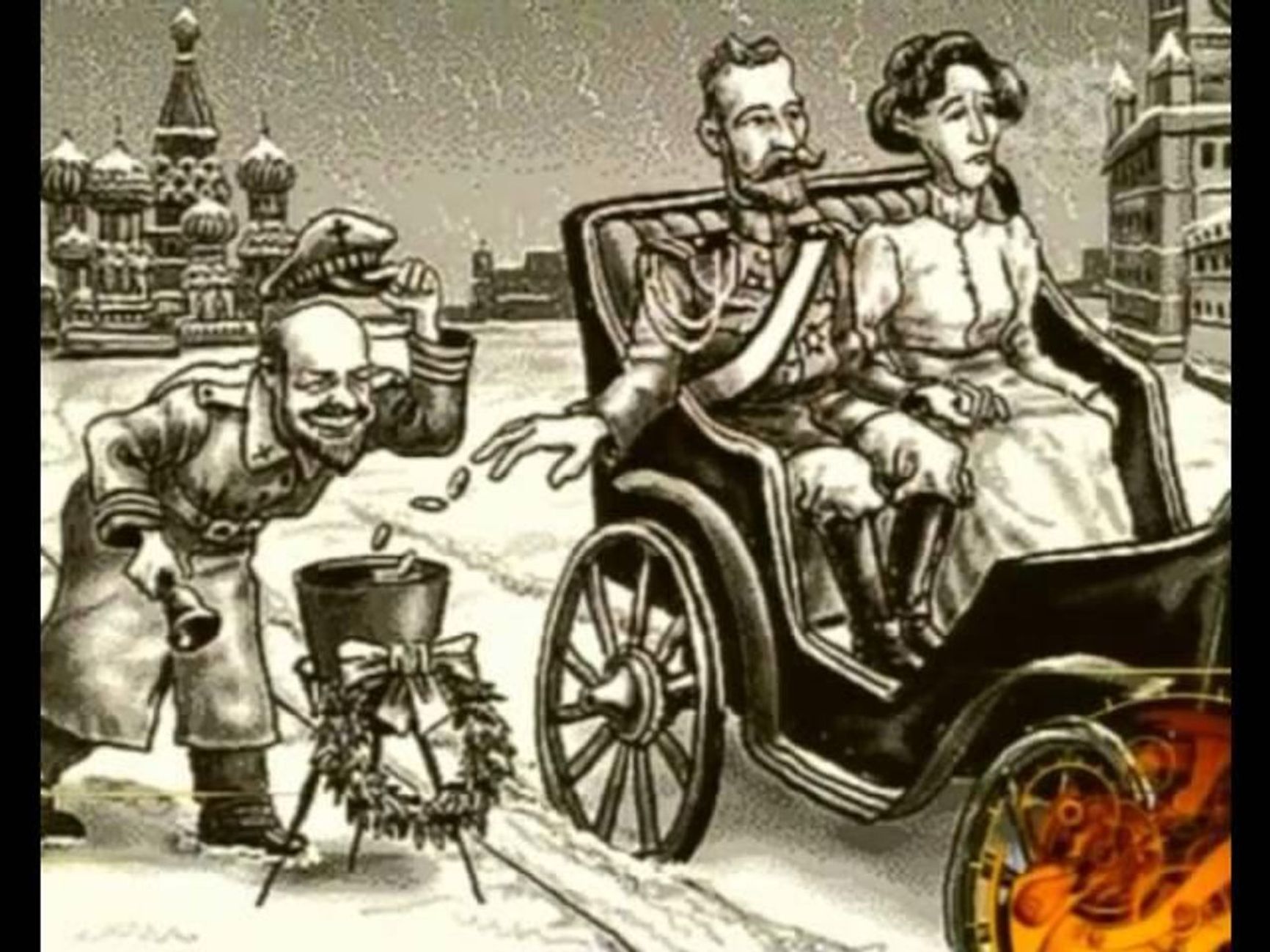
A defining feature of the series was its frank critique of Soviet repression — not portrayed as “local excesses” or “Stalinist aberrations,” but as an inseparable element of the Soviet system. Svanidze’s account of the revolution, the Stalin era, and the late USSR leaves no doubt: the system was fundamentally flawed. By the episode on the USSR’s collapse, viewers understand that the fall was neither a sudden “geopolitical tragedy” nor the result of foreign scheming. The Soviet Union simply collapsed under the weight of its own contradictions.
A defining feature of the series was its frank critique of Soviet repression — not as “local excesses” or “Stalinist aberrations,” but as an inseparable element of the Soviet system
Svanidze also did not shy away from discussing the way the USSR treated the so-called “national republics” it had occupied. In the 1974 episode, devoted to Lithuanian actor Donatas Banionis, Svanidze recounts the occupation of the Baltic states — the mass deportations, the local partisan struggles, and the damage the USSR inflicted on the economies of its new members. In this regard, his series was a complete novelty for Russia. The history of Latvia, Lithuania, and Estonia had remained largely undiscussed in the public space, even after the events of 1991.
Most importantly, Svanidze always viewed history through the prism of individual human personalities. Whether discussing Ballets Russes impresario Sergei Diaghilev or Bolshevik revolutionary Vladimir Lenin, the GULAG system or the Holodomor, Nikita Khrushchev or Yuri Shevchuk, Svanidze consistently saw history first and foremost as the result of moral choices made by specific people. Later Russian projects increasingly interpret the world through abstractions such as “state interests,” “geopolitical expediency,” and national “projects.” Not Svanidze’s.
“The Country of Soviets. Forgotten Leaders”: Simulating dialogue
From 2014 to 2018, Russia experienced a quick transition back towards the repressive atmosphere of the past. Crimea had already been annexed, Russian-backed separatists were attempting to seize Donbas and Luhansk from Ukraine, Medvedev-era “liberalism” was mocked as weak and ineffective, and systemic censorship was growing bolder. Yet the facade of normal life persisted: university professors still dared to dissent from Kremlin policy, independent opposition media still operated, and culture remained relatively free. The authorities continued to simulate the appearance of meaningful dialogue with Russian society.
An excellent example is the television series “The Country of Soviets. Forgotten Leaders” (2017, 2019), created with the participation of the Russian Military-Historical Society and funded by the Ministry of Culture. It tells the story of Soviet figures who were supposedly “forgotten” or “unjustly criticized” in post-perestroika Russia: Stalin-era foreign minister Vyacheslav Molotov, Stalin-era security chief Lavrentiy Beria, Red Terror architect Felix Dzerzhinsky, long-serving Soviet functionary Anastas Mikoyan, and Brezhnev-era bureaucrat Alexei Kosygin. The series presents these individuals as strong, vibrant patriots who sometimes acted harshly but always in the state’s interest.
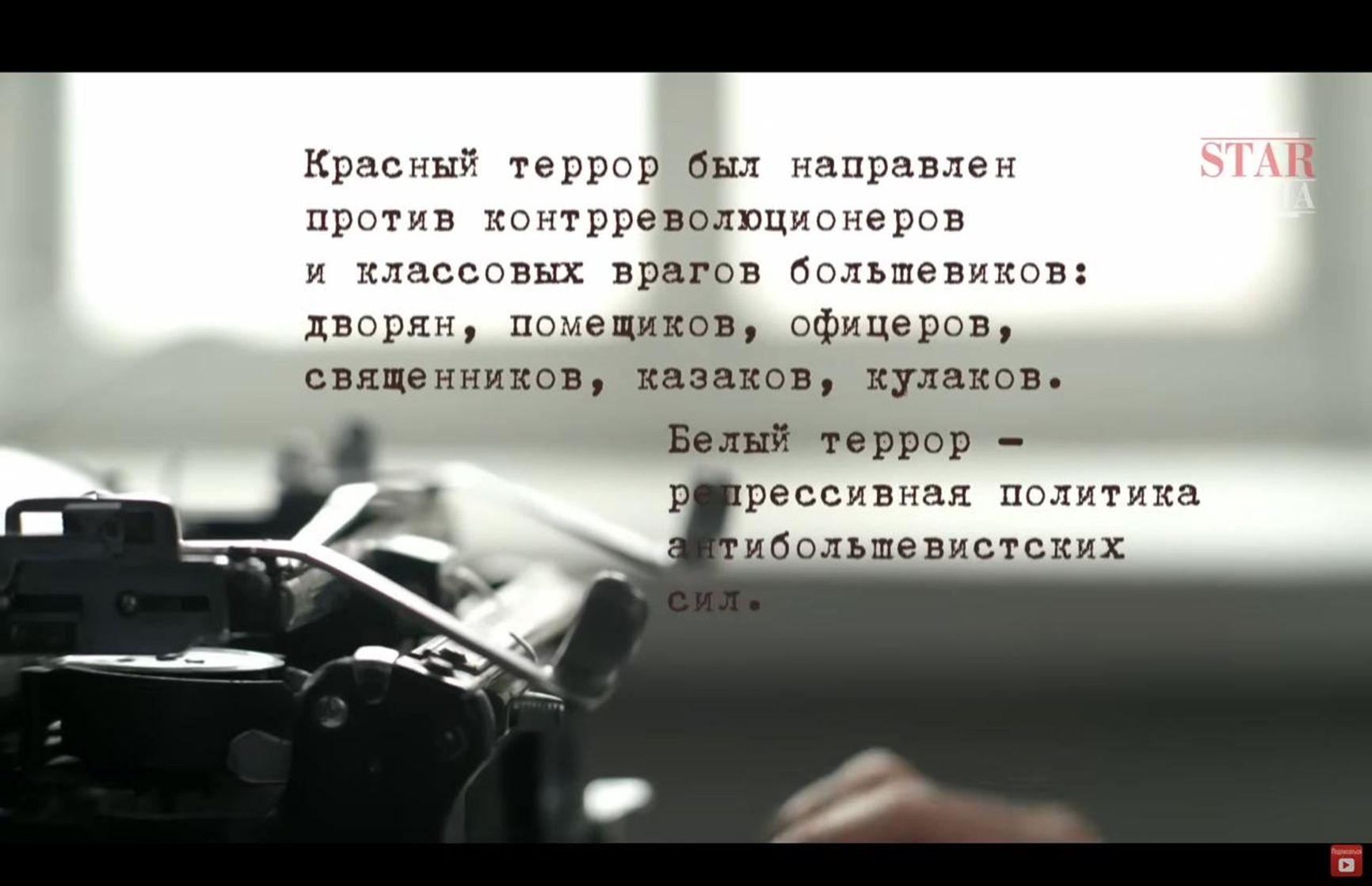
Here a paradox arises: defending state interests is presented as the highest value, yet these “heroes” cannot be portrayed as ruthless opportunists. Therefore, whenever the series touches on repression, it is depicted as if a sudden personal tragedy has struck from out of nowhere (for example, Molotov did not intervene when a close friend was sentenced to execution, and he voted to expel his wife, Polina Zhemchuzhina, from the Communist Party).
Whenever the series touches on repression, it is depicted as a sudden personal tragedy striking the heroes
Unlike Svanidze, the creators of “Forgotten Leaders” present repression simply as an excess of state-building. “The Red Terror was a reaction to the White Terror – the extreme repressive measures of anti-Bolshevik forces,” says the series. The viewer is meant to conclude that terrible repression occurred, but it was necessary to build the state, and was therefore justified.
Two versions of the USSR
From roughly 2018 to 2022, Russian ideology underwent another transformation. During this period, all remnants of the 1990s and early 2000s — including critical perspectives on history — were finally discarded. Themes of the “terrible 1990s,” the “bad” Yeltsin, and the humiliation supposedly experienced by Russians after the USSR’s collapse were increasingly exploited.
Putin-era television revived a formula from 2005: the collapse of the USSR was the greatest geopolitical catastrophe of the twentieth century. Under these conditions, glorifying the USSR became routine. Russia’s full-scale invasion of Ukraine in 2022 intensified rhetoric about the “Russian world” and its “Russian values.”
In this period, state-sponsored projects about the USSR and Russian history exhibit two trends: one glorifies the USSR while offering standard criticism of the West; the other emphasizes Soviet achievements (industrialization, military victories, cultural symbols) while avoiding anything “foreign” or “non-Russian” in Soviet ideology. Television cycles such as “Comrade USSR” and “The Age of the USSR” serve as prime examples.
“Comrade USSR”: Restrained aggression
The historical documentary series “Comrade USSR” premiered in 2024. It was produced by Stas Namin with support from the Internet Development Institute. The premiere aired on VGTRK’s platform “Smotrim.” In the series, the country’s past is shown through the eyes of the aforementioned Anastas Mikoyan — a legendary Soviet bureaucrat and political “veteran” who held key posts under Lenin, Stalin, Khrushchev, and Brezhnev.
A well-known Soviet anecdote about Mikoyan involves a well-wisher advising the functionary to carry an umbrella on a rainy day. Mikoyan’s response is: “Don’t worry, I’ll run between the drops.” : True to this image, in the series, Mikoyan navigates the unpleasant facts of Soviet history. The narrator does not hide stories of repression, party purges, the failure of collectivization, and other Soviet problems. Yet according to the authors, the ends justified the means: the USSR was a great country, and sacrifices were inevitable.
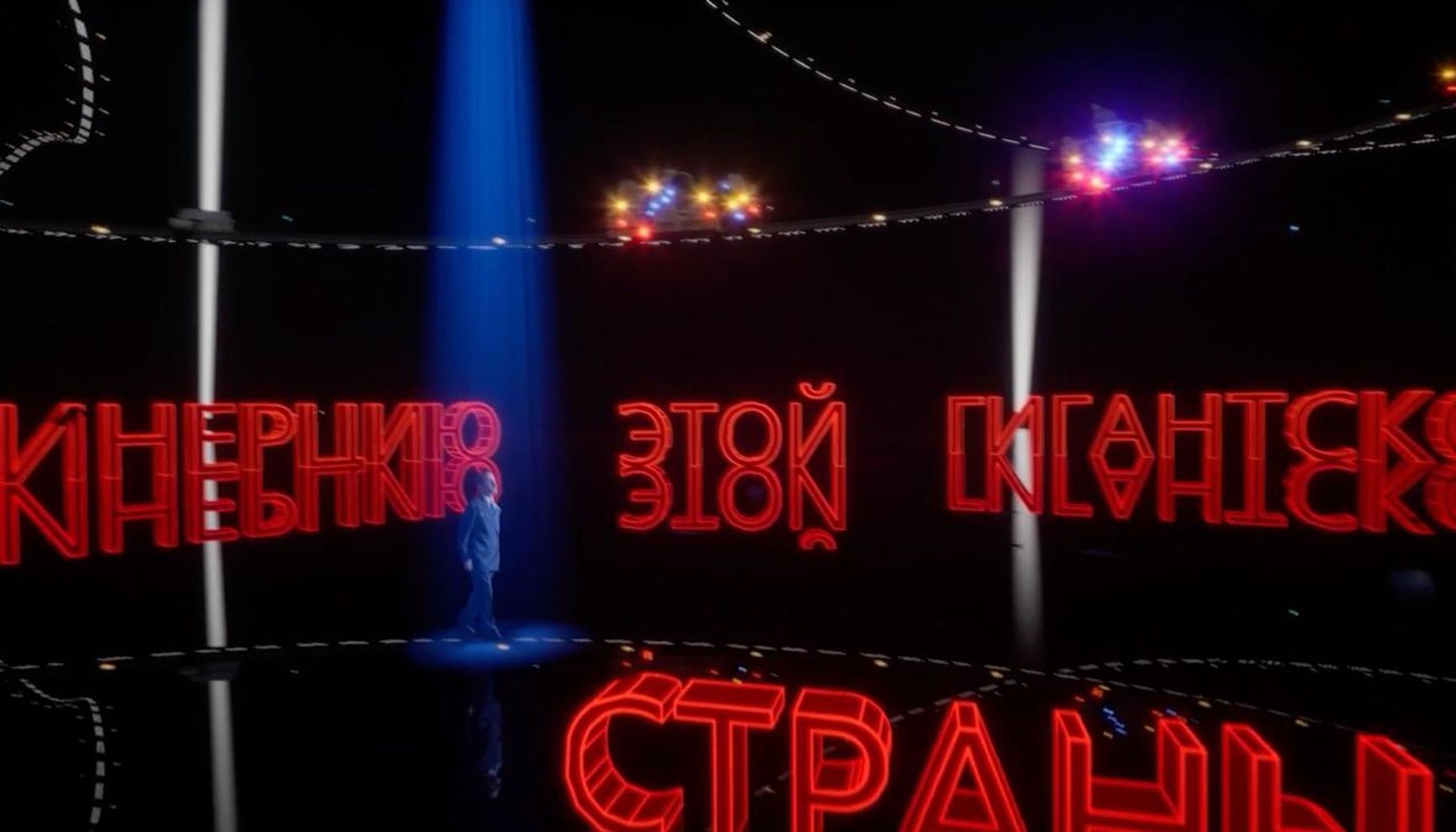
For example, the series’ protagonist says: “Stalin dragged this vast, backward country into the future with an iron hand, understanding its inertia. Stalin chose the whip and intimidation because, most likely, he simply had no other tools for rapid results.” The series upholds Stalin’s image as a wise, principled, insightful leader of the people.
The series upholds Stalin’s image as a wise, principled, insightful leader of the people
In keeping with Putin-era rhetoric, Mikoyan uses the phrase “Western partners” with caustic undertones, primarily targeting Britain and the United States. The audience learns that these countries hated the early USSR and refused to trade with it. The series claims that such Western attitudes were the result of fear and hatred — ignoring the possibility that “Anglo-Saxon” skepticism towards the Bolsheviks might have had something to do with the revolutionaries’ promise to spread communism abroad.
Even when mentioning that some Western industrialists financed Hitler’s rise (true), the authors comment: “The strange penchant of Western European and American business circles for nurturing uncontrollable monsters became a sad tendency in world history.” Russian viewers are implicitly reminded of “color revolutions” and the current situation in Ukraine. The series does not clarify the nuances of 1930s Western policy, which was still shaped by memories of World War I and fears of Soviet aggression.
“The Age of the USSR”: Unrestrained madness
“The Age of the USSR” aired on Russian television in 2023. This five-film series examines the USSR through the histories of its former republics: Central Asia, the Caucasus, the Baltics, and, of course, Ukraine, Moldova, and Belarus. The series shamelessly disparages the West and former republics that “dared” to leave Russia’s sphere of influence.
The series shamelessly disparages the West and former republics that “dared” to leave Russia’s sphere of influence
Each episode follows a similar pattern: viewers are bombarded with CGI and eclectic visuals while a narrator delivers a “theory” (for example: “In a nation-state, the titular nation sets the moral tone”). The narrator then explains each former republic’s history of relations with Russia.
The narrator describes how the USSR helped these republics acquire factories, collective farms, journalistic institutions, an education system, fashion houses, irrigated valleys, and energy production facilities. Interestingly, when discussing Central Asia or the Caucasus — areas that Russia apparently still hopes to influence and “return home” — the film emphasizes their rich cultural and scientific heritage. In contrast, the Baltic states, hated by Moscow for their independence, are depicted as historical and cultural wastelands, giving the world “nothing except Peter I’s mistress, Catherine.”

The USSR’s collapse is barely explained. Episodes recount life under Soviet rule, then the screen flashes to “After the Divorce,” and viewers are shown present-day conditions. For example, Armenia is sternly warned that it has no prospects and will not remain at peace, purportedly because the interests of multiple geopolitical powers intersect there.
“The Age of the USSR” develops its own political philosophy: all human history is described as a struggle between “global projects” and “national projects.” Global projects include the “religious project” (primarily Catholicism), the “liberal project,” and the “red project” (communism). The authors claim these projects seek to deprive people of national identity and impose rules on them. Meanwhile, all the USSR’s shortcomings are attributed to the “red project,” while all achievements are credited to Russia’s ability to “flexibly and respectfully” adapt neighboring peoples’ traditions to itself.
The series drew criticism from contemporary Russian communists and USSR apologists, such as blogger Klim Zhukov, who felt the state was portrayed as deliberately weak and incapable. However, the Putin regime has never truly been an heir to the Soviet Union. The contemporary Kremlin is primarily interested in the forms of control that the USSR exerted — both internationally and domestically.
In this series, the USSR is a pretext to remind neighbors of everything Russia supposedly gave them. However, the primary moral superiority belongs to traditional Russian culture, values, and Orthodoxy. All others are depicted as caricatured villains: the British are cunning and heartless, Americans are tattletales and arrogant, Ukrainians are eternal nationalists and traitors, Catholics are accused of mounting “crusades against Orthodox Christians,” and the intelligentsia and bohemians are accused of sexual depravity and creating the Western LGBT movement.
Bonus episode: “Good Tsar, Bad Liberals”
Nikolai Svanidze understood that certain patterns in Russian consciousness predated Soviet rule. Therefore, he often drew analogies to contemporary Russia not only from the USSR, but also from the Russian Empire. Russian propagandists, while focusing on the Soviet past, also recall tsarist times. And although one might assume USSR glorifiers would view imperial Russia sceptically, Putin-era eclecticism allows seemingly incompatible narratives to mix.
From the mid-2010s, Russia increasingly produced documentary and feature film projects about the Russian Empire. Among the most notable is the 2019 film “Union of Salvation” about the Decembrist uprising (a failed coup d'état led by liberal military officers following the death of Emperor Alexander I in 1825).
Popular Russian blogger and film critic BadComedian rightly noted that the film does not make it clear why the uprising occurred: according to the plot, the tsar is good, the Decembrists are good, everyone holds Russia’s best interests at heart, yet it all suddenly ends quite tragically. The Decembrists’ “sin” is that they did not wait for the tsar to resolve the relevant issues peacefully. Much like in “The Age of the USSR,” where the bohemian class obstructs the state’s development, the Decembrists are seen as being at fault for trying to protest the government’s policies instead of cooperating to fix them.
Even more revealing is the 2017 series “Demon of the Revolution,” produced by Rossiya-1and Non-Stop Production in collaboration with Mosfilm. Through the eyes of “Tsarist counterintelligence officer Alexei Mezentsev,” whose supposedly real-life memoirs underpin the plot, the series tells the story of the Russian Empire’s end and Lenin’s arrival in Petrograd — a trip allegedly paid for with German money.
The series presents no clear conflict or moral evaluation. Lenin cannot be portrayed as a merciless fanatic (since the USSR is ultimately good and Lenin is its founder). Nevertheless, Nicholas II cannot be shown as weak, because the tsar is the tsar, and the empire is a bastion of traditional values. The result is absurd: everyone is good and wishes Russia well, but everything ends in a bloody revolution and civil war. The villains are the cunning Germans funding the revolution, along with “nationalists” from “Estonia” who “for some reason” crave freedom from the empire. Critics noted multiple historical inaccuracies, with some even calling the series a work of “science fiction.”
Where Svanidze discussed objective problems of the Russian Empire and monarchy, newer projects smooth over those realities. For example, the 2017 series “The True History of the Russian Revolution” depicts imperial Russia as largely prosperous and victorious in World War I. Revolution is condemned as bloody chaos. The authors imply that the intelligentsia and “liberals,” seeking freedom and rights, provoked a revolution they could not control.
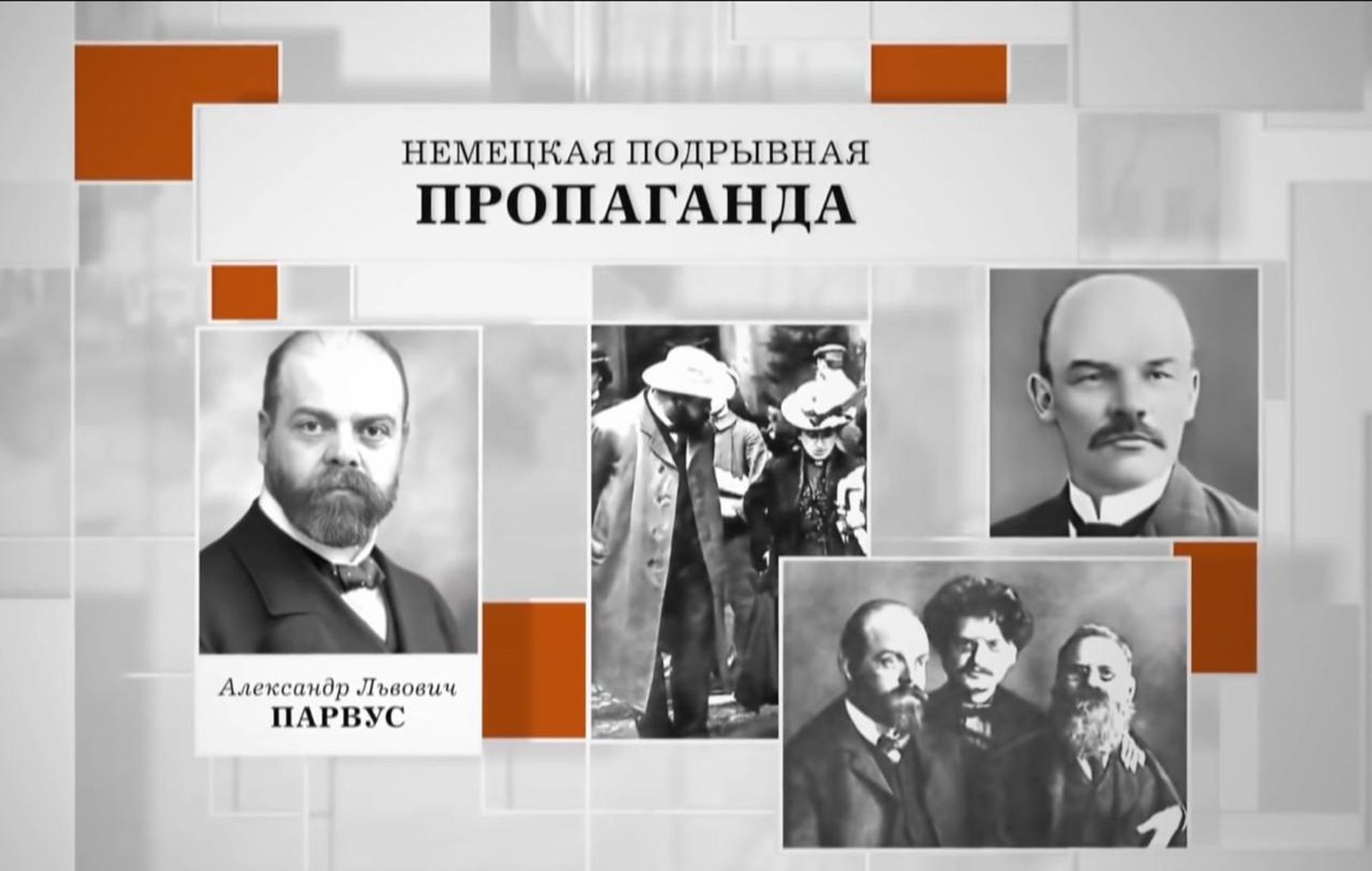
Ironically, this series was produced by the same company (StarMedia) and released the same year as “Forgotten Leaders.” In one series, viewers are told Bolshevik repressions were carried out “for the country’s future,” while in the other, the revolution and liberal actors are condemned. The second series implicitly warns Russians against “color revolutions” lest a similar disaster follow.
In one series, viewers are told Bolshevik repression was carried out “for the country’s future,” while in another, the revolution is condemned
Abandoning honest discussion of history has revived an old imperial formula in Russian consciousness: the ends justify the means. While Svanidze’s “Historical Chronicles” emphasized human life and personal responsibility, new projects dissolve individual lives into abstract categories of “greatness,” “national projects,” and “strategy.”
Disregard for human life, cultivated through such series, is directly linked to the current war in Ukraine. Millions of viewers, accustomed to narratives in which sacrifices are inevitable and justified, easily accept that the deaths of Ukrainians and Russians alike are an acceptable price to pay for “restoring greatness.”
Thus, documentary mythology has become fertile ground for justifying a new war. Despite the efforts of people like Nikolai Svanidze, Russia has not yet learned the most important lesson of the twentieth century: no state’s greatness is worth a human’s life.